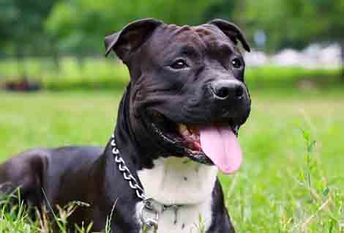The American Staffordshire Terrier's roots can be traced back to 19th century England. The Bulldogs and terriers of the time were crossed to create a dog that possessed desirable attributes of each breed. The result was an agile and energetic terrier with the Bulldog-like perseverance and confidence.
The breed was originally called the Bull-and-Terrier Dog, Half and Half, or Pit Dog. Eventually, it became known in England as theStaffordshire Bull Terrier. Sadly, the dogs were most commonly used for fighting until the early 20th century when dog fighting was made illegal.
The Bull-and-Terrier dogs came to the United States towards the end of the 19th century where they became known as Pit Bull Terriers and then American Bull Terriers. Though there is some disagreement on the details, it is said that these dogs were not widely used for dog fighting like their ancestorsbut were more commonly used for general farm work, hunting, and companionship.
As time went on, the breed was developed into taller dogs with larger builds than their English counterparts. The breed was registered with the AKC in 1936 as the Staffordshire Terrier. The name was changed in 1972 to differentiate between the shorter, smaller English version (today'sStaffordshire Bull Terrier). Today, the two are completely separate dog breeds.












